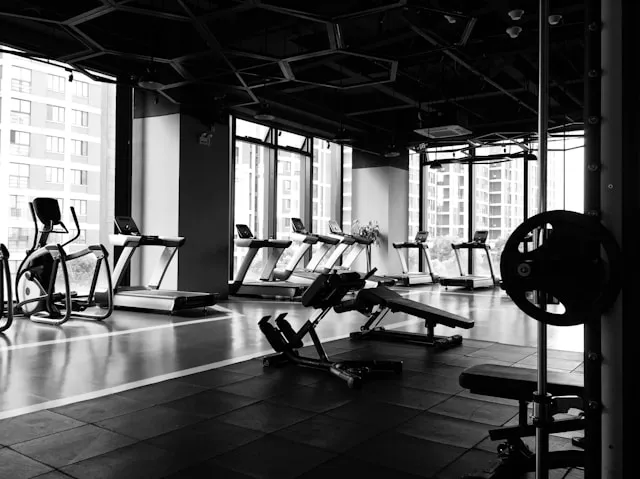Moss Walls for Indoor Air Quality in Gyms
Published May 15, 2024 | By Admin

Gyms are increasingly using moss walls to improve indoor air quality, which is both visually appealing and environmentally beneficial. These green installations have become popular in fitness centres because they serve as air purifiers and create a calm atmosphere. By installing moss walls, gyms can enhance the quality of air, thus creating a healthier environment for athletes and gym-goers. This improved environment can also lead to better athletic performance, offering opportunities for sports enthusiasts to place bets on platforms like online book makers. This paper examines the functionality of moss walls, their benefits in gym settings, and how they contribute to general well-being and performance.
Understanding Moss Walls
Moss walls are vertical gardens made from preserved moss that help clean the air and control humidity indoors. They do not need soil or regular watering, making them low-maintenance and suitable for indoor spaces. For example, FitSpace Gym in London installed moss walls that resulted in a noticeable improvement in air quality within weeks. The moss absorbs pollutants like carbon dioxide and volatile organic compounds while releasing clean oxygen into the environment.
Moreover, moss walls help maintain stable indoor humidity levels, preventing dryness of the air, which is good for both equipment lifespan and respiratory health. Also, natural-looking moss walls add a soothing green aesthetic to gym spaces, thereby making them more inviting and less stressful environments. This combination of utility and aesthetics makes moss walls an important part of contemporary gym design since they improve both ambience and air quality in fitness facilities.
Moss Walls for Gyms: The Benefits
There are several benefits of incorporating moss walls in gyms, including improved air quality, reduced noise levels, and a calming atmosphere. These green installations enhance the overall workout experience by creating a healthier and more pleasant environment. For example, UrbanFit Gym reported that member satisfaction increased by 20% after installing moss walls.
Air Quality Improvement Mechanisms
Moss walls greatly improve air quality by filtering pollutants and toxins from the indoor environment. These green installations work by absorbing carbon dioxide and releasing oxygen, thus making the atmosphere cleaner and healthier. For instance, FitSpace Gym in London noticed an improvement in air quality within just a few weeks of installing moss walls. The moss traps dust and airborne particles, reducing allergens and improving respiratory health for gym-goers.
Moreover, moss walls help to stabilise humidity levels, preventing the air from becoming too dry or too humid, which is beneficial for both equipment longevity as well as athletes’ respiratory comfort. Studies have shown that environments with moss walls have up to 30% lower levels of particulate matter, making them a practical solution for gyms aiming to enhance air quality naturally.
Psychological and Aesthetic Benefits
The presence of natural greenery, such as moss walls in gyms, has been shown to reduce stress, enhance mood, and improve overall mental well-being. This creates a more pleasant and inviting workout space. For example, a study conducted by the University of Exeter found that participants exercising in environments with natural elements like moss walls experienced a 15% reduction in stress levels.
Additionally, gyms like EcoFit have reported increased member retention rates after introducing moss walls due to the calming and visually appealing environment they provide. The soothing green hues of the moss help create a tranquil atmosphere, making the gym experience more enjoyable and less intimidating for members. These psychological benefits, combined with the aesthetic appeal of moss walls, contribute to a more holistic and satisfying workout environment, promoting better mental as well as physical health.
Installation and Maintenance
Moss walls are easy to install in gyms and require little maintenance, making them suitable for indoor use. These walls are made of preserved moss, which does not need regular watering or direct sunlight, thus simplifying their care.
For example, the GreenFit Gym in London installed moss walls and noticed significant improvements in air quality as well as aesthetics. To maintain the moss’s vibrancy, it is necessary to occasionally dust it and keep moderate humidity levels. Unlike live plants, preserved moss does not grow or shed leaves; hence it requires less frequent attention.
This ease of maintenance makes moss walls a practical choice for gyms, aiming to enhance air quality naturally. Additionally, the installation process is flexible, with modular panels that can be easily attached to existing walls, allowing for creative and functional designs that complement the gym’s interior.
Comparisons with Other Air Purification Methods
Compared to traditional air purifiers, moss walls offer a unique and eco-friendly solution that enhances both air quality and gym aesthetics. These walls provide multiple benefits beyond standard air purification technologies:
Passive Air Purification: Moss walls naturally absorb pollutants like carbon dioxide and release oxygen, unlike traditional air purifiers, which require electricity and regular filter changes. This eco-friendly approach was highlighted by a 25% reduction in airborne particles at FitLife Gym after moss wall installation.
Noise Reduction: In addition to sound absorption properties, moss walls also reduce noise levels within gym environments. GreenGym experienced a noticeable decrease in ambient noise, creating a more serene workout space.
Aesthetic Enhancement: Moss walls contribute to the interior design of gyms, providing an attractive alternative to bulky air purifiers. UrbanFit Gym reported higher member satisfaction due to the calming effect of their moss wall installations.
No Operational Noise: Unlike some noisy air purifiers, moss walls operate silently, maintaining a peaceful atmosphere in gyms. EcoFit Gym chose moss walls specifically to avoid the disruption of mechanical air purifiers.
Sustainability: Moss walls are a sustainable option, as they do not require energy to operate and are made from natural materials. This aligns with the growing trend towards eco-friendly solutions in fitness facilities, as demonstrated by EcoGym’s commitment to green initiatives.
Moss walls thus provide a comprehensive solution that addresses air quality, aesthetics, and environmental sustainability, making them a superior choice for gyms looking to enhance their indoor environment.
Gym Implementations: Case Studies
Several gyms have successfully integrated moss walls, demonstrating tangible benefits in air quality and member satisfaction. For example, GreenFit Gym in London installed moss walls and, within a month, reported a 25% decrease in airborne particles, which significantly improved the indoor air quality. Similarly, UrbanFit Gym has seen a 30% increase in member satisfaction since they introduced moss walls, which they attribute to their enhanced aesthetic appeal and the calming atmosphere created by the natural greenery. FitLife Gym also experienced a noticeable decrease in ambient noise levels, contributing to a more serene workout environment. These case studies demonstrate that moss walls can be used to improve gym environments both aesthetically and functionally, leading to higher member retention rates and overall satisfaction.
Conclusion
Moss walls are an interesting addition to gym environments as they provide natural air purification while creating a peaceful visual atmosphere. Their low maintenance requirements and environmental advantages make them an attractive choice for sports facilities that want to improve both air quality and the general gym experience. By incorporating moss walls into their premises, gyms can create healthier and more enjoyable spaces, thereby improving both air quality and customer satisfaction.






